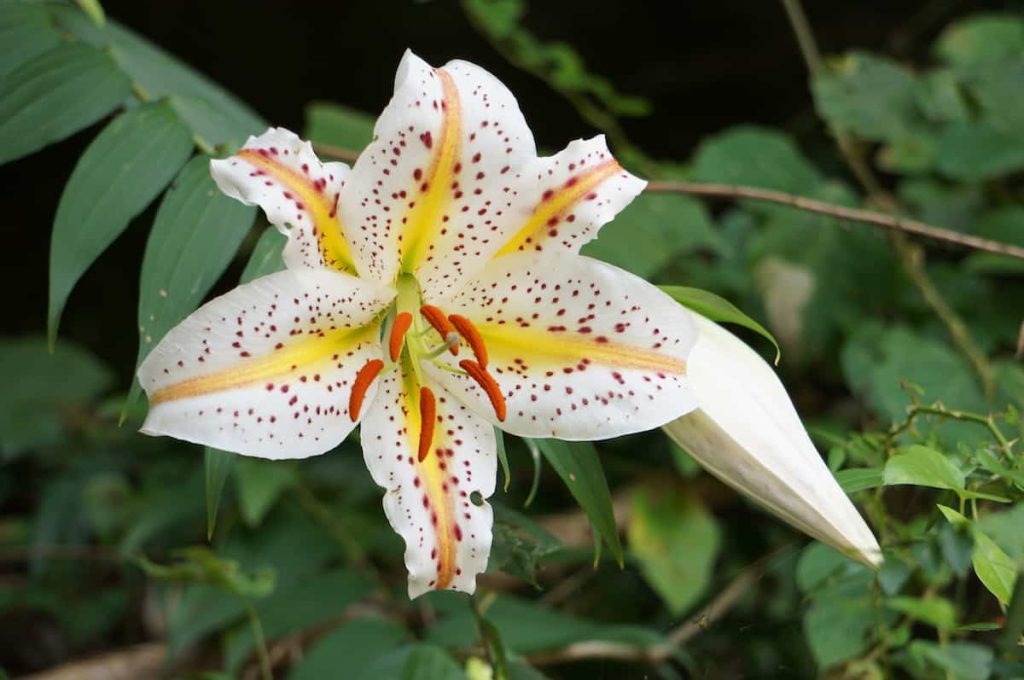Lilium Auratum:
Lilium Auratum, also known as the Golden-rayed Lily, is a beautiful species of lily. It is known for its stunning golden yellow petals with dark spots, and its delicate fragrance.
History
Lily, is a species of lily native to Japan. It was first described by German botanist Philipp Franz von Siebold in 1844. The plant is prized for its large, fragrant flowers that bloom in mid to late summer and feature golden yellow petals with brown spots.
Lilium auratum has been cultivated in Japan for centuries and was often used in traditional Japanese floral arrangements. In the late 19th and early 20th centuries, the plant became popular in Europe and North America as an ornamental plant for gardens and conservatories
Requirements for LiIium Auratum:
To grow and maintain healthy Lilium Auratum plants, the following requirements must be met:
Light:
Lilium Auratum prefers bright, indirect light but can also tolerate some direct sunlight. Ensure that the plant is not exposed to intense afternoon sun, which can cause the leaves to burn.
Water:
Lilium Auratum should be kept consistently moist but not waterlogged. Water the plant deeply once a week and ensure that the soil is well-draining to prevent root rot.
Soil:
Lilium Auratum prefers well-draining, fertile soil. A mixture of equal parts peat moss, sand, and garden soil is ideal.
Temperature:
This lily prefers a cool environment and does best in temperatures between 60-70°F (16-21°C).
Humidity: Lilium Auratum requires moderate humidity levels. If the air in your home is dry, you can increase humidity levels by placing a humidifier near the plant or by using a pebble tray filled with water.
Fertilizer: Fertilize Lilium Auratum every 4-6 weeks during the growing season with a balanced, water-soluble fertilizer.
Pruning: Prune the spent flowers and leaves to encourage healthy growth and prolong the blooming period.
Tips for successful cultivation.
There are some successful tips for the cultivation of Lilium plants
Choose the right location:
Lilium plants thrive in well-drained soil and prefer a location that receives full sun to partial shade.
Proper soil preparation:
Mix organic matter with the soil to improve drainage and fertility. A pH between 6.0 and 6.5 is ideal for growing lilies.
Provide adequate water:
Keep the soil consistently moist but not waterlogged, especially during flowering and bulb growth.
Proper fertilization:
Liliums benefit from regular fertilization, especially with a balanced fertilizer, during the growing season.
Proper staking:
Lilium plants can grow tall and may need staking to prevent them from falling over.
Deadhead flowers:
Regularly removing dead or faded flowers can help improve the overall appearance of the plant and may encourage re-blooming.
Winter protection:
In cold climates, mulching the soil around the base of the plants and removing the foliage can help protect the bulbs from winter damage.
Prevent pests and diseases:
Regularly inspecting plants for pests and diseases can help prevent problems from becoming widespread.
Economic Importance:
The economic importance of Lilium auratum beyond:
Horticulture
Lilium auratum is highly valued for its vibrant, golden-yellow petals, and its fragrant, trumpet-shaped flowers that bloom in the summer months. This plant is a popular choice for ornamental gardens, parkland, and public spaces due to its attractive appearance, and its ability to adapt to a variety of soils and climates. This versatility makes Lilium auratum an important plant for horticulturists and landscapers, who can use it in their designs to create a stunning visual impact.
You can Read to know: Lilium Candidum (Madonna Lily) – Propagation, Care, and Diseases
Floristry Industry:

Lilium auratum is also an important flower for the floristry industry, with its blooms commonly used in cut-flower arrangements and bouquets. Its large, fragrant flowers make it a popular choice for special occasions such as weddings, birthdays, and other events. Its versatility also means that it can be paired with other flowers, such as roses, to create unique and eye-catching arrangements. In addition to this, the plant’s long vase life makes it a popular choice for those who want to enjoy its beauty for a longer period of time.
Realm of Medicine:
The economic importance of Lilium auratum extends beyond its use in horticulture and floristry, and into the realm of medicine. The plant contains compounds known as alkaloids, which have been shown to have anti-inflammatory, pain-relieving, and antispasmodic effects. These compounds have also been used in traditional Chinese medicine for centuries to treat a range of ailments, including headaches, menstrual pain, and digestive issues. As a result of its medicinal properties, Lilium auratum has become an important plant for the pharmaceutical industry, with its compounds used in the production of various health products.
Conclusion:
Lilium Auratum is a beautiful and delicate species of lily that requires consistent care to thrive. With proper lighting, watering, soil, temperature, humidity, fertilizer, and pruning, you can grow healthy, fragrant specimens that will add beauty to your home.

